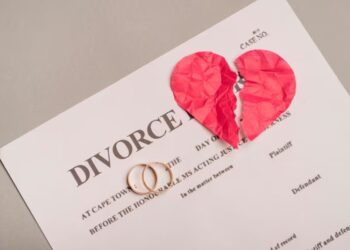In the wake of a truck accident, there’s a mix of physical pain, destruction, and emotional distress. When it comes to post-accident anxiety, knowing more about your legal options can help decrease the stress of the unknown. Today, review liability in trucking accidents and how to better protect your legal rights and get fair compensation for injuries and other damages.
What is Liability in Truck Accidents?
Liability is a concept experts in the legal field use to determine responsibility, often by looking for negligence. In this case, it’s who caused a truck crash. Proving liability isn’t a matter of pointing fingers at who is responsible for a collision.
It entails putting together pieces of evidence to get a clear picture of what happened. To help you navigate the process, this guide highlights a few key steps to prove liability in truck accidents. Identifying the party that caused harm can help accident victims maximize their compensation.
What Are the Steps to Identifying Liability in Truck Accidents?
When truck collisions happen, multiple parties, including the truck driver, trucking company, truck mechanic, or truck manufacturer, and other motorists, could be involved. While it’s ideal to let a legal professional handle the investigation, here are a few things to keep in mind.
1. Show Cause of Trucking Accident
Finding out what caused a trucking accident is a vital part of proving who the liable party (or parties) are. For instance, you might be a victim of a truck accident because the driver was speeding, distracted, or violating traffic lights.
An accident can occur if the truck has worn-out tires or defective brakes, engines, and other mechanical parts. These mechanical issues occur because of poor maintenance or faulty manufactured parts. Improper loading of cargo, weather conditions, and road design can also be causes of truck accidents.
2. Provide Evidence
Evidence is a crucial factor in establishing liability for accidents involving trucks. Some types of evidence can include:
- photographs and videos of vehicles involved, road conditions, visible injuries, and surroundings
- police reports and medical records that outline injuries sustained in the crash
- eyewitness testimony
- footage of the accident from nearby surveillance cameras
- expert witness statements
- truck activity logs
- black box data to reveal the truck’s braking patterns, speed, and other important details about the events leading to the crash.
Each piece of evidence can play a pivotal role in identifying liable parties. For example, eyewitness testimony gives a first-hand account of what happened in the moments leading to the collision. Visual presentations, like photos and video, can provide accurate details of the incident. Well-gathered evidence can help prevent insurers from denying claims.
3. Know Who Can be Held Liable
Liability can fall on various parties depending on the specific cause of the truck crash.
- Truck drivers: A driver may carry fault if they were driving under the influence of drugs or alcohol, speeding, using a cell phone, or more. They may also be liable for violating the hours of service regulations set by the FMCSA.
- Trucking company: Trucking companies may be held liable for inadequate training and forcing drivers to work overtime, which can lead to speeding, violating traffic laws, and distracted driving. Another way a trucking company could be responsible for the accident is when they fail to keep their trucks in good working conditions.
- Truck and parts manufacturer: In a scenario where an accident occurs because of faulty parts, the vehicle or parts manufacturer becomes liable. Under product liability law, the manufacturer takes liability for releasing defective automobile parts like faulty brakes, tires, steering systems, and engine parts.
- Third-party liability: Responsibility can also fall on the company in charge of packing cargo onto the truck for overloading or improperly securing goods. What if poor road conditions and poor signage contributed to the accident? For example, if a road construction zone doesn’t have barriers or warnings, leading to a crash, the road construction company may bear some liability.
4. Consult a Truck Accident Lawyer
Talking to a lawyer is one of the first things to do immediately after a truck accident. A qualified truck accident attorney can evaluate your case, provide guidance on your legal options, and help collect the required evidence to establish liability. Besides helping you understand the different laws that apply to truck accidents, a lawyer can help negotiate with insurers and other parties involved.
It’s challenging to handle communications with parties involved in an accident. According to attorneys at Cohen, Feeley, Altemose & Rambo, an attorney can help take care of negotiations and file a truck accident claim on your behalf to protect your legal rights.
What Happens if Multiple Parties Are Liable?
After thorough investigations, multiple parties may be found responsible for the truck accident. For example, a truck driver can be partially responsible for speeding, while the packaging company could be at fault for improper loading.
When the actions of multiple parties lead to a truck accident, the liability is shared based on each party’s percentage of fault. This means you can file multiple claims to receive a sufficient settlement from all parties. To navigate these complexities, consult your attorney for guidance.
Conclusion
When you’re injured in a truck accident, it’s normal to want the party responsible held accountable. To accomplish this goal, you must understand what truck accident liability is.
It’s important to know the party or parties responsible for the accident and ensure they pay for the damages caused by their negligence. To prove fault in a truck accident, you must recognize the cause of the crash, collect evidence, and seek legal guidance from an experienced truck accident lawyer.










